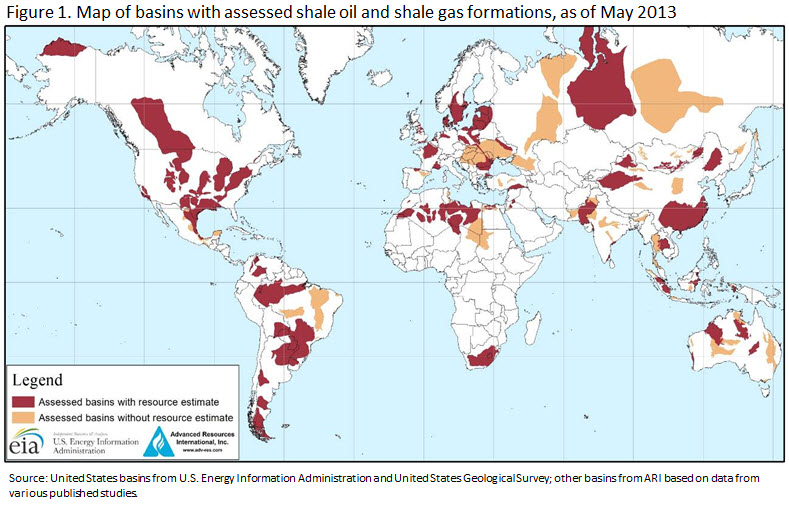A surge in oil and gas production from shale rock has transformed energy in the United States, helping reverse declines in oil production and prompting a massive shift from coal to natural gas electricity production that has led to a significant drop in carbon dioxide emissions (since burning coal releases more carbon dioxide than burning natural gas). A new report from the U.S. Energy Information Administration lends support to the idea that a similar transformation could take place outside the United States.

The map above gives a sense of just how widespread oil and gas resources are. The EIA report concludes that Russia has even more technically recoverable shale oil than the United States. Three countries have more shale gas—China, Argentina, and Algeria. Geologists have long known that some shale deposits contain large amounts of oil and gas, but it’s only recently that hydraulic fracturing and horizontal drilling technology have made it feasible to extract.
While other countries may have more of these resources than the United States, the impact in some of them may not be as great, or happen as quickly. It could take many years to develop resources in other countries because the geology is somewhat different—the techniques that work in the United States might not quite work elsewhere. What’s more, many countries don’t have the needed technological expertise. Some countries make it difficult for companies to set up and find ways to exploit the resources (see “China Has Plenty of Shale Gas, But It Will Be Hard to Mine”).
Don’t settle for half the story.
Get paywall-free access to technology news for the here and now.